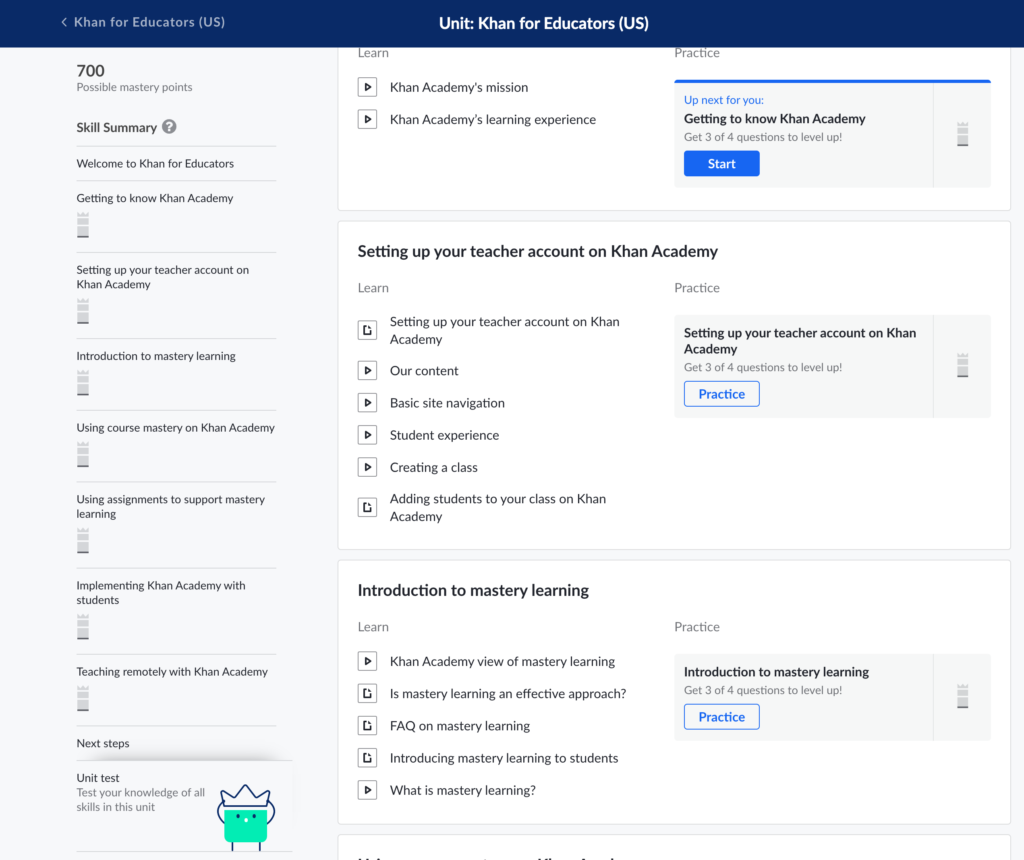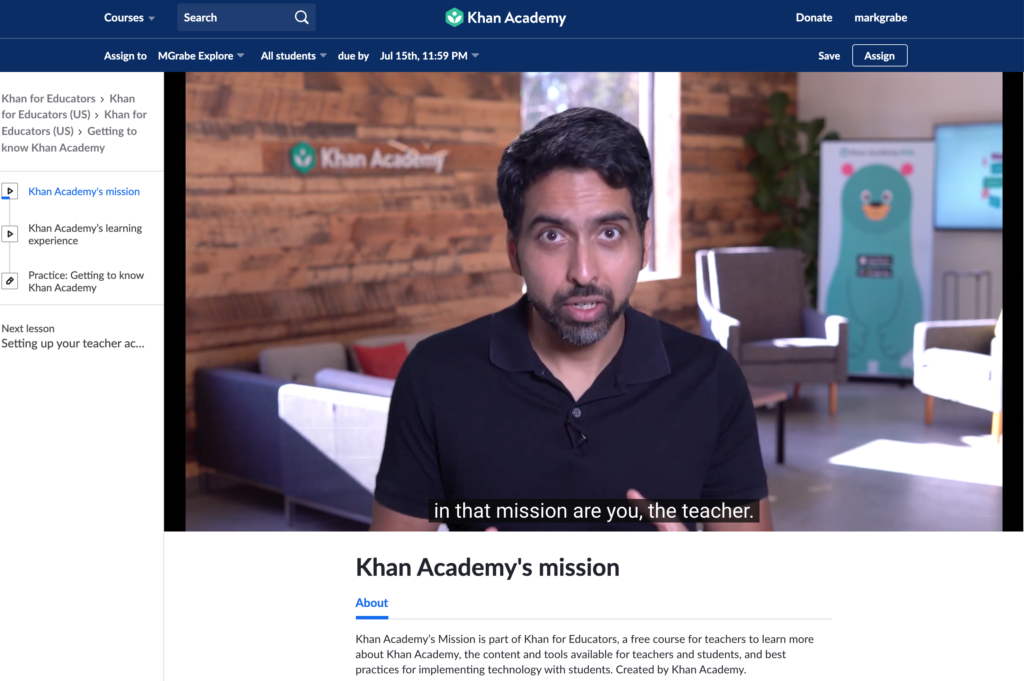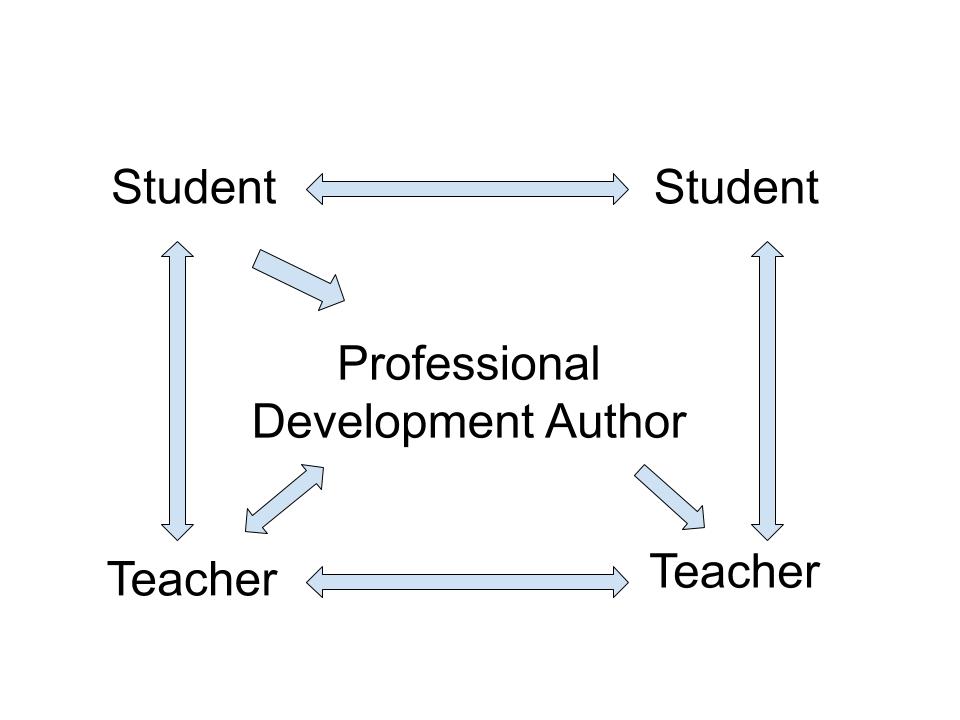Mastery learning is described in some detail in previous posts over the years. Here are a couple of important topics for this post. First students vary significantly in what might be called “learning rate”. The word “aptitude” would be my personal preference, but this term is less descriptive. While the origins of differences in learning rate are perhaps disputed (e.g., is it what was traditionally called intelligence), I don’t think any practitioner would dispute that students acquire knowledge and skills at different speeds. An important issue is whether the instruction that students receive accommodates these differences. If instruction moves on to new material before a student has learned the present focus of instruction, students at best would have a knowledge or skill gap and at worse would be missing the background to learn something new that is based on or assumes other learning has been accomplished. Over time, these gaps accumulate, increasing the variability of learning rate. The frustration students experience in dealing with demands they are ill-prepared to master only magnifies the problem.
There have been attempts to deal with the variability in the rate of learning through practices such as ability grouping (tracking) and tutoring. Ability grouping comes with multiple difficulties such as labeling and equity issues and tutoring while very successful is prohibitively expensive.
Mastery instructional techniques have been investigated for years. My personal study of this topic begins with publications in 1968 – Bloom’s group based mastery and Keller’s personalized system of instruction (PSI). I provide greater detail on these approaches elsewhere. Interest in such approaches seemed to wane likely because of practical issues and because the systems required alterations in traditional educational practices rather than because of lack of effectiveness. The potential of technology for taking on some of the components of mastery instruction increasing efficiencies and changing attitudes of educational practice may encourage reconsideration of mastery approaches possibly with different terminology and different variations on the components of a mastery approach.
I consider the components of PSI and Bloom’s group-based mastery strategies to be – a) clearly stated and integrated objectives/goals, b) small units of instruction, c) mastery before progress, d) multiple, nonpunitive assessments, and e) remediation keyed to individual needs. When I work with graduate students on this topic, I typically ask them to explain how these components appear in PSI and Bloom’s group based mastery, but also in new instructional approaches that mention a commitment to typical mastery goals.
Briefly, here are a couple of examples of more recent instructional approaches with mastery characteristics. The Kahn Academy is a recent example of a technology-enabled approach that Kahn began to label as mastery (e.g., see One World Schoolhouse). My focus is not on the Kahn Academy here, but it seems to me to be similar to PSI when implemented as a full-blown system (using the short videos, competence checks, and hierarchical linking of learning units).
A second example I want to highlight is called the Modern Classroom Project. The modern classroom model is based on three components – blended instruction, self-paced learning, and mastery evaluation. Blended instruction proposes that educators replace face-to-face lectures to a group with short videos – think flipping the classroom. The idea is lecture involves limited interaction so why waste valuable face-to-face instructional time when videos can be viewed whenever a learner wants. Keller had the same idea in 1968 which he captured in the title of his paper – Goodbye teacher … The title might be misinterpreted if the paper is not actually read. What Keller noted was that lecturing to a group was not productive when students could read (back in the day when reading the textbook was assumed preparation for class). Reading could be completed whenever and to give Keller credit for an important insight reading was under the control of the learner – content could be reread if necessary and at the pace required by the learner.
Self-paced learning in the Modern Classroom to me is similar to Bloom’s group-based method of instruction. Bloom did not employ a pure mastery system absolutely requiring mastery before progress, but divided content into units often of two weeks. At a point during this time, students completed a formative assessment (you may have heard this term – this is where it comes from) on essential content. Those who passed this check were often moved on to self-guided supplemental activities while the teacher worked on the most essential skills with those not meeting the expectations of the assessment. A summative unit concluded the unit and all moved on. The Modern Classroom includes content identified as must do, should do, aspire to do. Students have great flexibility when they attempt to demonstrate competence of the related skills with the instructor keeping an eye on things and working with the students most needing assistance.
Mastery assessment is pretty much what it sounds like. Performing at the expected level of the knowledge/skill checks. While this is the only use of the work mastery in descriptions of the Modern Classroom, I hope that you can see the system applies other of the core mastery components I have identified under other labels. Technology plays a second role in the Modern Classroom in tracking goal accomplishments and helping the teacher identify those most in need of help.
Advocates of the Modern Classroom urge creativity in educators applying the core concepts they have identified. So, examples of implementation come in many different shapes and sizes.
The Modern Classroom Project is an organization offering resources and mentorship to interested schools. A free tutorial on the core concepts is available.
![]()





You must be logged in to post a comment.